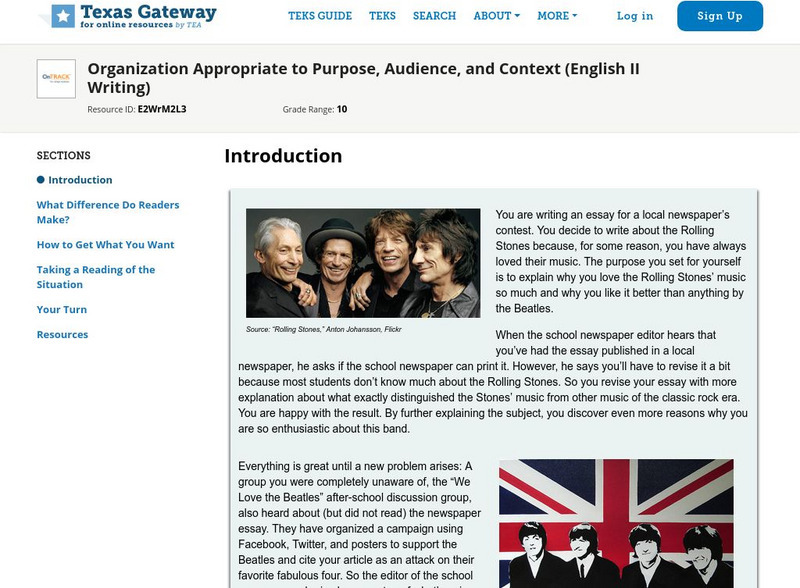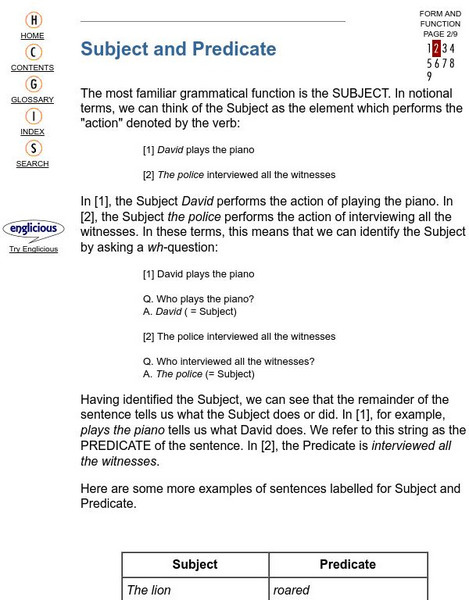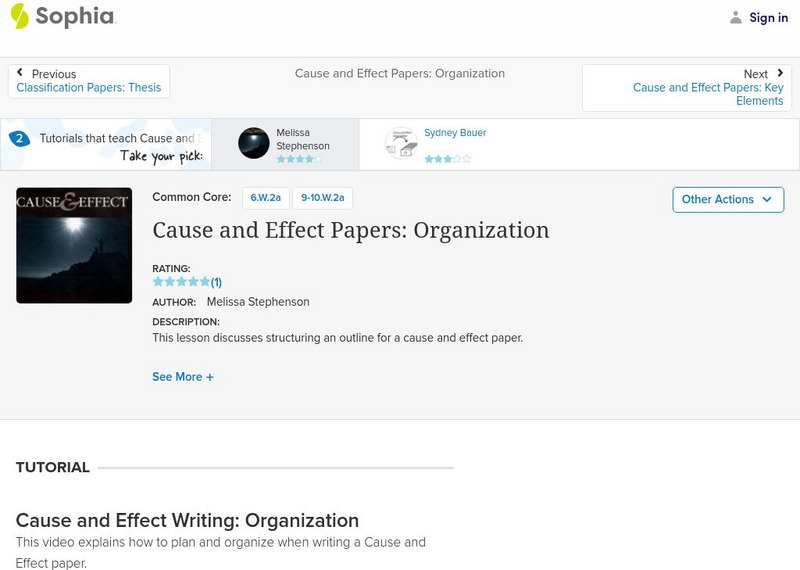Other
Style: Cause and Effect Writing
This site provides a list of what to do and not do for writing cause and effect essays. It also contains an evaluation checklist at the end which students can use for their own writing.
Grammarly
Grammarly Handbook: Methods of Reasoning
A list (with examples) of common errors in logic including the following: non sequiturs, hasty generalization circular argument, ad hominem, ad populum, and red herring.
ReadWriteThink
Read Write Think: Sequence of Events Chart
A printable graphic organizer to help students sequence events and recognize cause and effect relationships within a story. Directions on how to use this graphic organizer as well as lists of teaching ideas and related resources are also...
University of North Carolina
University of North Carolina: The Writing Center: Fallacies
Discussion of common fallacies, along with definitions, examples, and tips on avoiding them.
Sophia Learning
Sophia: Writing an Argument Paper
In this slideshow tutorial, students will review how to write an argument paper. Students will review the parts of the argument paper, which include the thesis, claim, support, and counterarguments. CCSS.ELA-Literacy.CCRA.W.1, W.11-12.1a...
Lumen Learning
Lumen: Boundless Communications: Logical Appeals
This lesson focuses on using logical appeals in persuasive speeches including inductive and deductive reasoning, inductive reasoning and associative reasoning, forming a rational appeal, and errors in reasoning-formal and informal.
Other
Bbc: H2g2 Circular Reasoning
Excellent definition and discussion of the term "Circular Reasoning," including a couple of very clear examples.
Lumen Learning
Lumen: Writing Skills: Logic in Paragraphs
This lesson focuses on logic in paragraphs including logic, structure, rank order, and organization.
Lumen Learning
Lumen: Rhetorical Appeals: Appeals to Logos
This lesson focuses on appeals to logos, or appealing to your audience's logical side including your types of source material, remembering your audience, and being sure to maintain clear lines of reasoning throughout.
Lumen Learning
Lumen: Rhetorical Appeals: Kairos and Logos
This lesson focuses on the 4th logical appeal called Kairos, a time when conditions are right for the accomplishment of a crucial action; the opportune and decisive moment.
Lumen Learning
Lumen: Rhetorical Appeals: Appeals to Ethos
This lesson focuses on appeals to Ethos, When you evaluate an appeal to ethos, how successfully a speaker or writer establishes authority or credibility with his or her intended audience. You ask yourself what elements of the essay or...
Lumen Learning
Lumen: Rhetorical Appeals: Establishing Ethos
This lesson focuses on establishing ethos or credibility. You can establish ethos-or credibility-in two basic ways: you can use or build your own credibility on a topic, or you can use credible sources, which, in turn, builds your...
Lumen Learning
Lumen: Analysis: Evidence
This lesson focuses on evidence in the analysis including being selective with evidence, being clear and explicit, and moving past obvious interpretations.
Lumen Learning
Lumen: Writing Skills: Common Logical Fallacies
This lesson focuses on logical fallacies including defining them, discussing the different types of logical fallacies, and a practice activity.
Lumen Learning
Lumen: Writing Skills: Spotting Logical Fallacies
This lesson focuses on recognizing common logical fallacies and evaluating them in texts. It also provides a practice exercise.
Lumen Learning
Lumen: Writing Skills: Formula for Refutation and Rebuttal
This lesson focuses on the formula for refuting and rebutting counterarguments including accurately representing opposing viewpoints, using a respectful, non-incendiary tone, using reliable information, using qualifying words to aid...
Lumen Learning
Lumen: Writing Skills: Further Your Understanding: Refutation and Rebuttal
This lesson focuses on examples of rebuttal and refutation to improve your understanding.
University of Sydney (Australia)
The Write Site: Structuring Your Individual Arguments
A diagram is provided to help students organize an argument. Assertions, sub-assertions, evidence, and counterarguments are included. Click on page 2 at the bottom to see the functions of the above and page 3 to for a practice activity....
Other
Wheeling Jesuit University: How to Write a Cause Effect Essay [Pdf]
This writing lab explains the terms "cause" and "effect" and how to write cause-effect essays.
Texas Education Agency
Texas Gateway: Organization Appropriate to Purpose, Audience, and Context
[Accessible by TX Educators. Free Registration/Login Required] In this lesson, you will learn how to adjust the organization of your essay to make it appropriate for different purposes, different audiences, and different contexts.
Lumen Learning
Lumen: Critical Reading: Supporting Claims
This lesson focuses on supporting claims including the distinction between main ideas and supporting details, relationship between purpose and supporting details, sufficient and related support, and support and elaboration. W.9-10.1a...
University College London
University College London: Subject and Predicate
The Survey of English Usage provides explanations and examples for the subject and the predicate.
ClassFlow
Class Flow: Becoming an Effective Listener
[Free Registration/Login Required] This flipchart focuses on the traits of an effective listener and the identification of popular logical fallacies and propaganda techniques. In addition, there is an Activote at the end to check student...
Sophia Learning
Sophia: Cause and Effect Papers: Organization
This lesson discusses structuring an outline for a cause and effect paper.





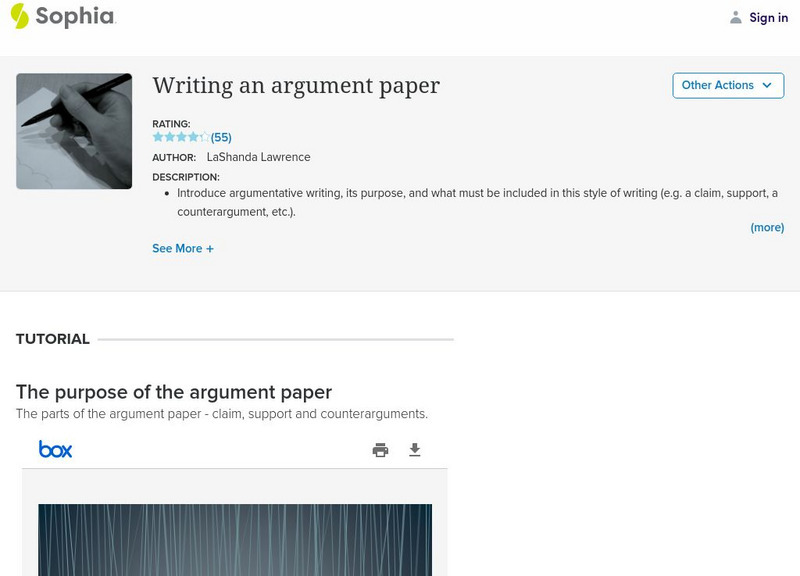

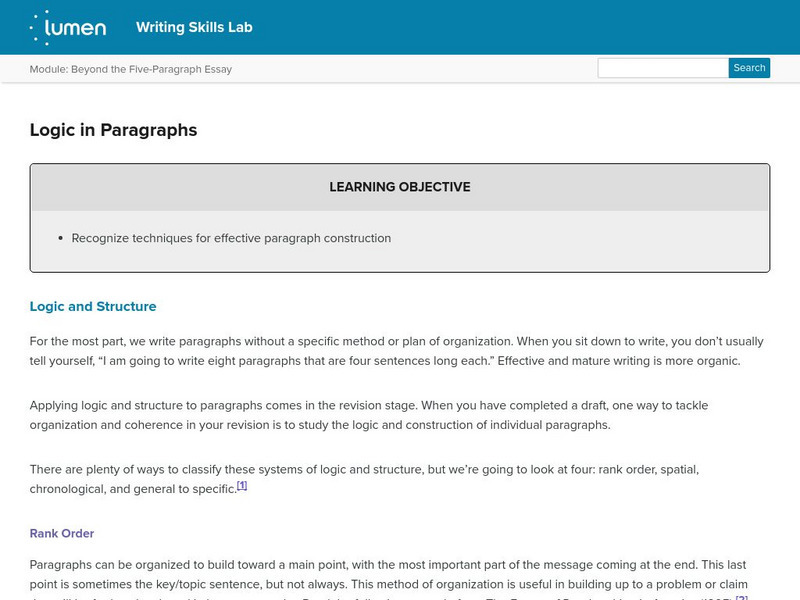
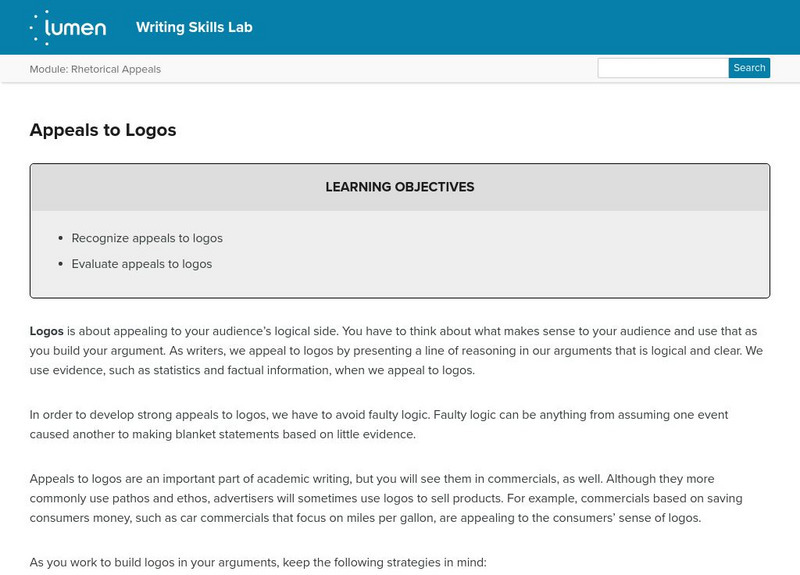

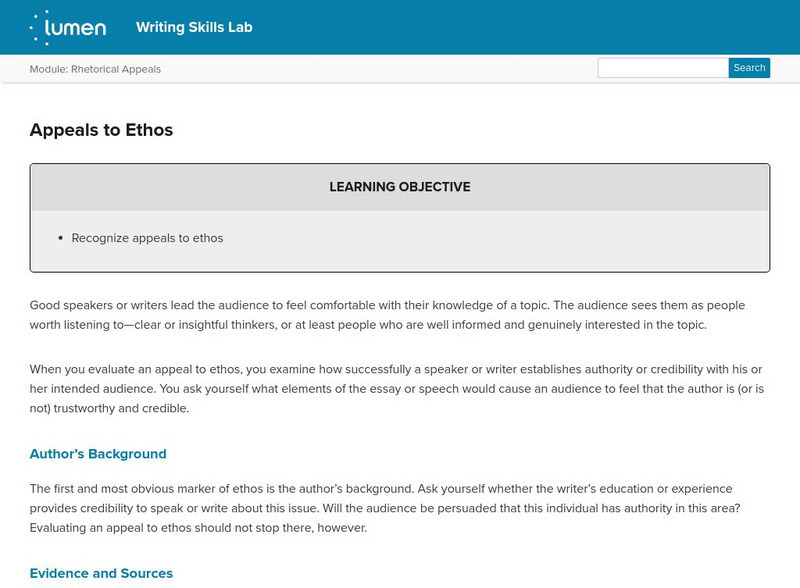



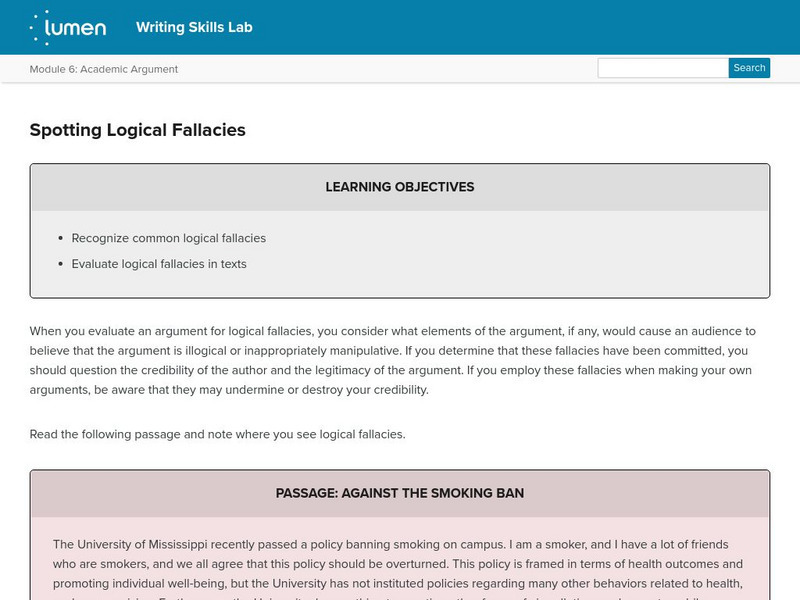

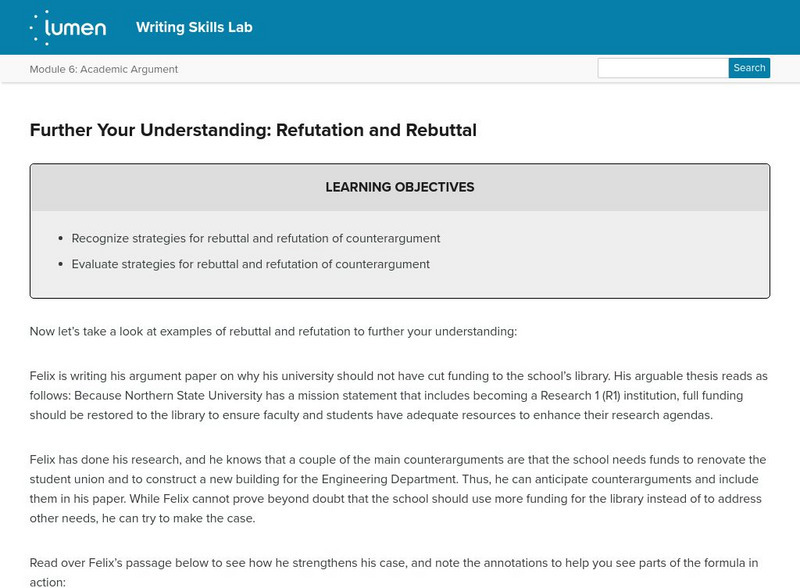

![Wheeling Jesuit University: How to Write a Cause Effect Essay [Pdf] Handout Wheeling Jesuit University: How to Write a Cause Effect Essay [Pdf] Handout](http://content.lessonplanet.com/resources/thumbnails/411265/large/bwluav9tywdpy2symdiwmduymc0xmdmwnc0xztdwmnvvlmpwzw.jpg?1589993216)
